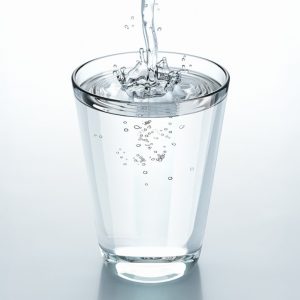Recovery Strategies
Sleep.
Not only quantity, but quality is important. Human growth hormone which is essential for body repair, is mostly produced during the first four hours of sleep, and these turn out to be the most critical hours for recovery. Alcohol, caffeine, eating late do not help quality of sleep. Naps during the day should be avoided if they interfere with your ability to sleep at least eight hours at night. You can find more tips for a good night’s sleep and improved heart rate variability (HRV) here.
Cold Therapy.
The therapeutic use of cold is called cryotherapy. It is a form of counter irritation, where the skin and the areas beneath are slightly stimulated with cold temperatures in order to trigger a healing process by reducing inflammation and muscle tightness.
Although ice can be helpful when properly applied, it can do harm when applied incorrectly. Ice should never be applied directly to your skin. Instead, use a moist cloth or towel on the skin with the ice applied on top of it. A moist towel helps transfer the cooling benefits whereas a dry one can partly insulate your skin from the cold. In this way, the cooling effect can reach all areas, including some bones. If you experience numbness, immediately remove the ice.
There is also a safer and more effective form of cyrotherapy, and that’s soaking in a bathtub filled with cold water or finding a lake or stream. Even if you’re not injured, a cold bath is a great way to speed recovery from long or hard training and competition.
Massage.
 A commonly used recovery method is massage therapy for both injury and prevention purposes. Massage focuses on increasing blood circulation and lymph flow, reducing muscle tension and spasm, improving range of motion, and helping to reduce pain. Massage involves soft tissue manipulation of the body’s muscles and aids in stress reduction, which can help recovery from training and competition. It can also reduce high cortisol levels to help reduce anxiety, improve the immune system, and help other dysfunction associated with high levels of this stress hormone A variety of techniques are used in sports massage, including effleurage, petrissage, and vibration. Swedish massage is particularly valuable for endurance athletes, especially those with adrenal dysfunction. Pool recovery. This is a low-stress and therapeutic option because there is less impact on your joints. Find the shallow end of the pool, and go through a set of exercises that might include walking, jogging, knee lifts, and stretching. Of course, you can also swim laps using a variety of strokes to work your entire body.
A commonly used recovery method is massage therapy for both injury and prevention purposes. Massage focuses on increasing blood circulation and lymph flow, reducing muscle tension and spasm, improving range of motion, and helping to reduce pain. Massage involves soft tissue manipulation of the body’s muscles and aids in stress reduction, which can help recovery from training and competition. It can also reduce high cortisol levels to help reduce anxiety, improve the immune system, and help other dysfunction associated with high levels of this stress hormone A variety of techniques are used in sports massage, including effleurage, petrissage, and vibration. Swedish massage is particularly valuable for endurance athletes, especially those with adrenal dysfunction. Pool recovery. This is a low-stress and therapeutic option because there is less impact on your joints. Find the shallow end of the pool, and go through a set of exercises that might include walking, jogging, knee lifts, and stretching. Of course, you can also swim laps using a variety of strokes to work your entire body.
Active recovery.
Passive recovery is going to complete bed rest or doing no exercise. Active recovery, however, such as walking is a much better option for faster recovery. Depending on the duration and intensity of the event or hard training session, active recovery can start one to two days afterwards. Go with either a very light intensity of your particular sports or just plain walking for 30 minutes up to an hour.
Nutrition.
 Athletes work hard on refining nutrition throughout training and during competition. What works well for one person may not be right for another and getting it right takes a degree of trial and error. Recovery nutrition strategy is often neglected and is arguably just as important.
Athletes work hard on refining nutrition throughout training and during competition. What works well for one person may not be right for another and getting it right takes a degree of trial and error. Recovery nutrition strategy is often neglected and is arguably just as important.
Some tips include paying very close attention to hydration levels, if in doubt you should probably drink to thirst. Caffeine can offer a welcome boost shortly after a hard workout but should be avoided from mid-afternoon onwards to encourage good overnight recovery.
There is a vital 45 minute carb refuelling window after workouts. During this time the body optimises carbohydrates and aids recovery. Interestingly low quality, high GI carbs are fine as in fact it gets to the right places quicker.
It is also recommended that athletes eat protein regularly (every 2-3 hours) post hard workout too.
The rest of this 3 part series is available here:
How to use HRV in sports training part 1 – The HRV Basics
How to use HRV in sports training part 2 – Performing the Measurement

Truly amazing this content,very informative.Thank you.